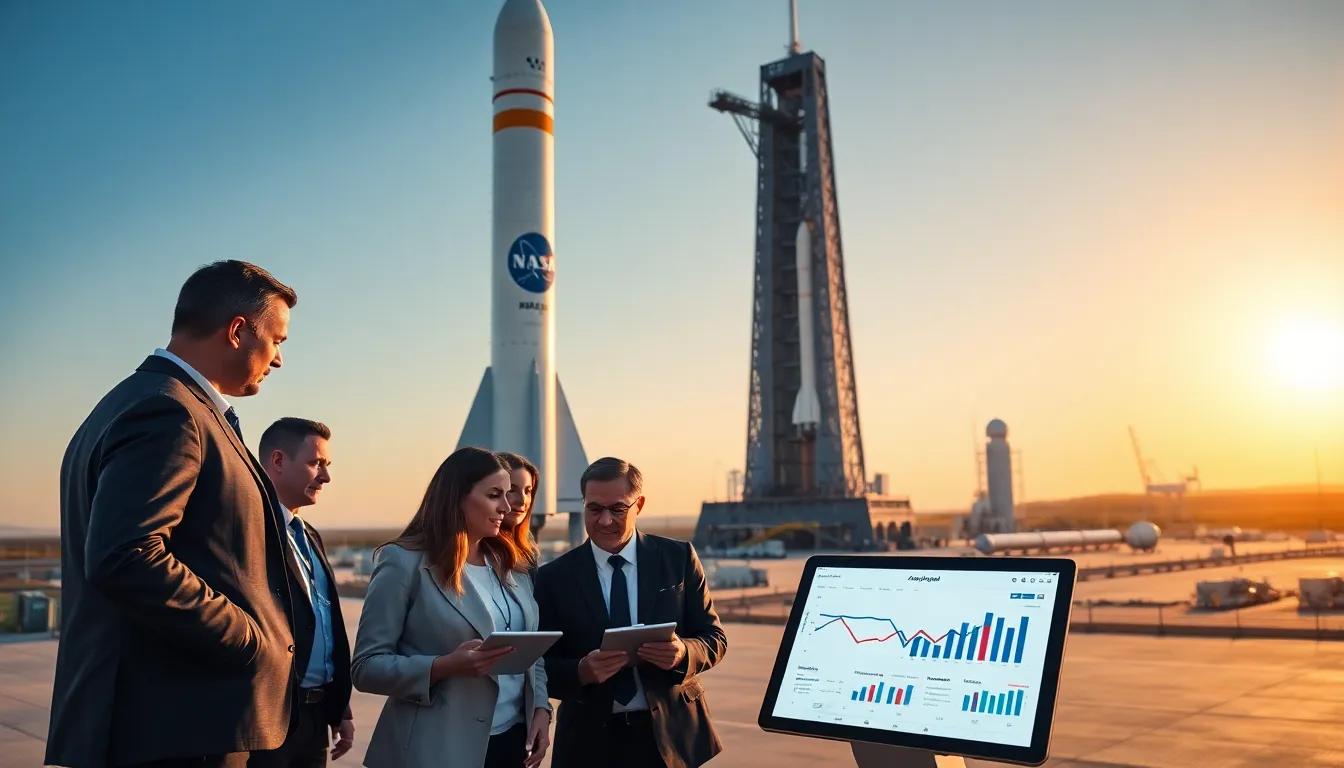Table of Contents
ToggleWhen it comes to the great expanse of space, the question isn’t just about how far we can go: it’s more about how little we can actually manage with today’s technology. Spoiler alert: it’s not as far as you might hope. Like a child asking, “Are we there yet?” on a road trip, we’re stuck in a cosmic car trying to figure out if we can even make it to the next gas station in this vast universe. Buckle up as we investigate into the intriguing realm of current space travel technology and explore the limits of our cosmic reach.
Overview Of Current Space Travel Technology

Space travel technology today is a marvel of engineering and innovation. At its core, it combines rocket propulsion, navigational systems, and life-support technologies. The most prominent method of space travel involves chemical rockets. These work on a fairly simple principle: burning fuel creates thrust, pushing spacecraft into orbit and beyond. Think of it like letting air out of a balloon, but instead, the balloon is a massive machine that fights against Earth’s gravity.
Currently, NASA’s Space Launch System (SLS) and SpaceX’s Falcon 9 are among the leading technologies in this domain. These rockets are designed to transport crew and cargo beyond low Earth orbit. The SLS is specifically designed for deep space missions, including future manned missions to Mars, while the Falcon 9 has been instrumental in delivering payloads to the International Space Station (ISS).
But, even though the impressive feats these technologies have achieved, they are still limited by the physics of propulsion. Chemical rockets can only achieve speeds that allow for travel within our Solar System but face severe challenges for even longer distances.
Human Spaceflight: Limitations And Achievements
Human spaceflight has made remarkable strides over the decades, with historic missions like Apollo 11 proving that humankind could plant a flag on the Moon. The ISS stands as a testament to international collaboration in space and showcases our ability to perform scientific research in microgravity. But here’s the kicker: human bodies aren’t built for long-haul space travel. The longer astronauts are in space, the more concerns arise about radiation exposure, muscle atrophy, and bone loss.
Currently, missions to the ISS last about six months, and even that requires extensive preparation and support. The challenges of deep space travel, primarily beyond Mars, amplify these issues. As pioneering as they are, human missions to destinations like Mars are still bogged down by lengthy transit times, roughly six to nine months, and the need for life support systems that can sustain crew members over such periods. Also, there’s the psychological impact of isolation and confinement to consider, making planning missions beyond our Solar System increasingly daunting.
Probes And Rovers: Exploring Our Solar System
While humans may be held back by physical and psychological limitations, robotic probes and rovers are gallivanting around the Solar System collecting data unimpeded. Missions like Voyager 1 and 2 have ventured beyond the outer planets and into interstellar space, providing invaluable information about our Sun’s environment and the boundaries of our Solar System.
Rovers like Curiosity and Perseverance on Mars have also been game-changers. Equipped with advanced technology, these rovers are exploring the Martian surface, analyzing soil samples, and searching for signs of past life. They can operate for years without human intervention, vastly extending our command over space exploration. Yet, the distances covered by these machines still show us just how far we have to go. For instance, Voyager 1 has been traveling for over 40 years and has just recently crossed into interstellar space, which gives a sobering perspective on how long it takes to escape even the influence of our solar system.
Potential Interstellar Travel: Concepts And Challenges
The idea of interstellar travel remains the subject of science fiction and theoretical discussions, as current technology isn’t equipped for such a venture. But it hasn’t stopped scientists from speculating about possible methods. Concepts like the Alcubierre warp drive propose ideas of bending space-time, allowing for faster-than-light travel. Though tantalizing, these remain purely theoretical at this point.
Another approach is the use of solar sails or nuclear propulsion systems, which could theoretically allow for more extended travel times between stars. But, the vast distances involved present monumental challenges. For instance, Proxima Centauri, our nearest star, is over four light-years away. At present speeds, sending a probe to that star would take tens of thousands of years. To make interstellar travel viable, we would need breakthroughs, like harnessing fusion energy or developing propulsion systems that significantly exceed our current capabilities.
Future Advancements In Space Travel Technology
The future holds promising advancements that could reshape our ability to travel farther into space. The development of ion drives and advancements in propulsion technology may pave the way for faster travel within our solar system. Ion drives, which use electricity to accelerate ions, are already proving to be more efficient than traditional chemical rockets.
Also, companies like SpaceX are advocating for reusable rocket technology, greatly increasing cost-effectiveness and sustainability of space travel. Researchers are continuously investigating materials that can withstand the harsh environment of space travel, providing even greater safety for future missions. Space tourism is on the verge of becoming a reality, with companies like Blue Origin and Virgin Galactic poised to take civilians beyond Earth’s atmosphere, igniting new interest and investment in space exploration.





